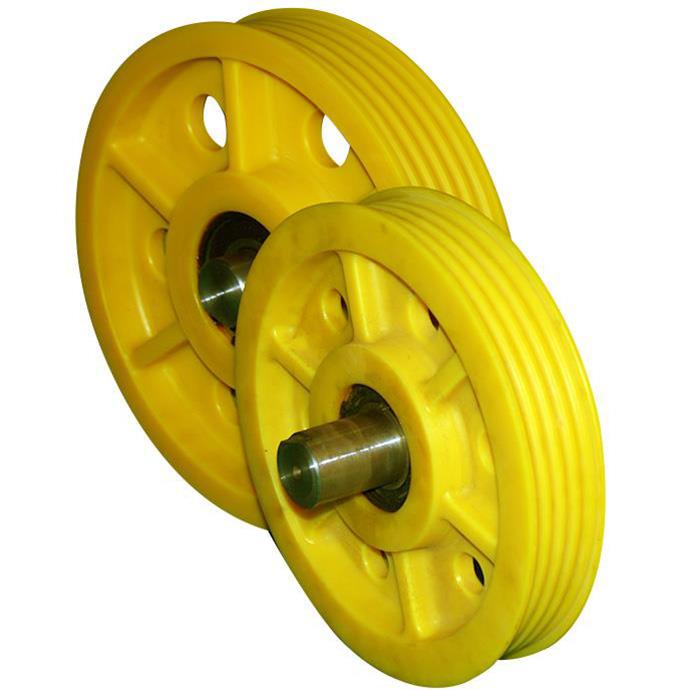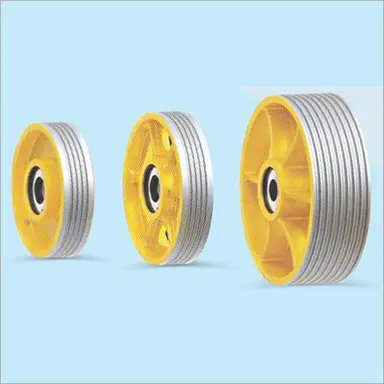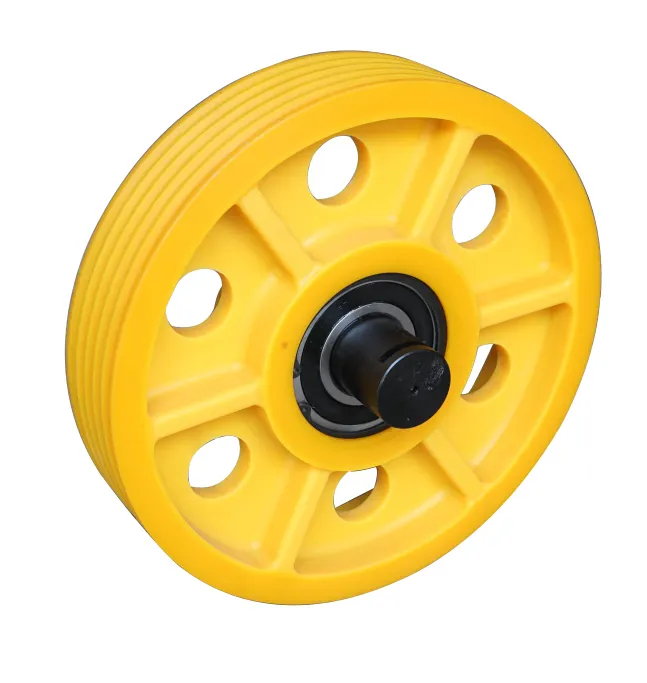Product Description
Stainless Steel 304/316 Swivel Pulley Single for Lifting
Size:5/8″ 3/4″ 1″ 1-1/4″ 2″(15-50mm)
SWL: 520lbs-1000lbs
Material: Stainless steel 304,or stainless steel 316
Packing: Cartons(20-25KGS)+ pallets(900-1000KGS)
| Item | Size | A | B | C | WLL |
| mm | mm | mm | mm | kg | |
| SSEP01 | 15 | 15 | 11 | 60 | 0.035 |
| SSEP02 | 20 | 20 | 13 | 73 | 0.075 |
| SSEP03 | 25 | 25 | 15 | 85 | 0.15 |
| SSEP04 | 32 | 32 | 15 | 95 | 0.25 |
| SSEP05 | 50 | 50 | 20 | 127 | 0.4 |
| We haito Stainless specializes in ss304 and ss31 Rigging, Pipe Fitting. |
| Contact me for futher detailed including the price. Waiting for your reply |
| The below is our more information: |
| *Experience: We are factory with 18 years export experience |
| *Process: Investment (Lost Wax) Casting & Forging, Machining, Mold Design |
| *Finishing: Mirror Polish |
| *Quality Control: Spectrometer Analysis & Load Testing Machines |
| *Management: ERP System |
| *Certificate: ISO 9001:2008 |
| *Service: Good after-sale team |
Specializing in the production of stainless
shackle,turnbuckle,terminal,screw and other metal products.Products of high quality,
fashionable, windely used in a variety of architecture, not only has the broad masses of the
domestic sales market,but also exported to Europe and the United States. Over the past few
years of production and management and exploration,Founder set up its own quality
management system.
| Material: | Stainless Steel |
|---|---|
| Surface Treatment: | Polishing |
| Motor Type: | Pulley |
| Installation: | Turning |
| Product Name: | Pulley |
| Transport Package: | Cartons+Plywood Pallets |
| Samples: |
US$ 15/Piece
1 Piece(Min.Order) | |
|---|
| Customization: |
Available
| Customized Request |
|---|
How do you select the right lifting pulley configuration for a specific lifting task?
Selecting the right lifting pulley configuration is crucial for ensuring safe and efficient lifting operations. The appropriate pulley configuration depends on various factors related to the lifting task at hand. Here are the key considerations when selecting the right lifting pulley configuration:
1. Load Capacity: Determine the maximum weight or load capacity that needs to be lifted. This information is crucial in selecting lifting pulleys that can handle the expected load without exceeding their safe working load limits.
2. Lifting Method: Consider the lifting method that will be used, such as vertical lifting, horizontal pulling, or a combination of both. Different pulley configurations, such as single sheave, double sheave, or multiple sheave blocks, are suitable for different lifting methods.
3. Pulley Efficiency: Evaluate the efficiency of the pulley system. Look for pulleys with low friction and smooth-running bearings to minimize energy losses and maximize the mechanical advantage provided by the pulley configuration.
4. Space Limitations: Assess the available space for the lifting operation. Depending on the space constraints, you may need to consider compact pulley configurations or alternative lifting methods that require less spatial clearance.
5. Environmental Factors: Consider the environmental conditions in which the lifting task will take place. Factors such as temperature, humidity, and exposure to corrosive substances may influence the choice of pulley materials and coatings to ensure durability and safe operation.
6. Required Precision: Determine the level of precision required for the lifting task. In some applications, such as delicate installations or precise positioning, a pulley configuration that allows for fine adjustments and controlled movement may be necessary.
7. Accessibility: Consider the accessibility of the lifting area. If the lifting task is in a confined or difficult-to-reach space, you may need to choose a pulley configuration that allows for easy installation, adjustment, and removal.
8. Regulatory Compliance: Ensure that the selected lifting pulley configuration complies with relevant safety standards, regulations, and industry guidelines. Adhering to these standards is essential for maintaining a safe working environment and preventing accidents.
9. Expert Advice: When in doubt, consult with lifting equipment specialists or engineers who have expertise in selecting the right pulley configuration for specific lifting tasks. They can provide valuable insights and recommendations based on their experience and knowledge.
By considering these factors and seeking expert advice when needed, you can select the appropriate lifting pulley configuration for a specific lifting task. The right pulley configuration will ensure safe and efficient lifting operations, minimize risks, and optimize performance.
Can lifting pulleys be used in both industrial and construction lifting equipment?
Yes, lifting pulleys can be used in both industrial and construction lifting equipment. Lifting pulleys are versatile components that play a crucial role in various lifting applications across different industries. They provide mechanical advantage, facilitate load distribution, and enable efficient lifting operations. Here’s how lifting pulleys are utilized in industrial and construction lifting equipment:
In Industrial Lifting Equipment:
Lifting pulleys are commonly employed in industrial settings for a wide range of lifting tasks. Industries such as manufacturing, warehousing, logistics, and material handling rely on lifting pulleys to move heavy loads, machinery, or materials. Some examples of industrial lifting equipment that utilize pulleys include:
1. Overhead Cranes: Overhead cranes are extensively used in industrial facilities to lift and move heavy loads horizontally. These cranes incorporate lifting pulleys and a trolley system to support the load and provide controlled movement. The pulleys in overhead cranes distribute the load weight and help in efficient load handling.
2. Gantry Cranes: Gantry cranes are similar to overhead cranes but operate on a different supporting structure. They are commonly used in construction sites, shipyards, or outdoor industrial areas. Gantry cranes utilize lifting pulleys to raise and lower heavy loads, enabling versatile lifting operations.
3. Forklifts and Lift Trucks: Forklifts and lift trucks are widely used in warehouses, distribution centers, and manufacturing facilities for material handling tasks. These vehicles often incorporate lifting pulleys in their mast systems to raise and lower loads efficiently.
4. Hoists and Winches: Hoists and winches are utilized in various industrial applications for lifting and pulling operations. They employ lifting pulleys to support the load and provide mechanical advantage, making it easier to lift heavy objects or move loads vertically or horizontally.
In Construction Lifting Equipment:
Lifting pulleys are also extensively utilized in construction lifting equipment to handle heavy loads, equipment, and materials at construction sites. Construction machinery and equipment often incorporate lifting pulleys in their design to enable efficient lifting and positioning operations. Some examples include:
1. Tower Cranes: Tower cranes are commonly seen at construction sites and are used for lifting and moving heavy materials and equipment vertically and horizontally. These cranes employ lifting pulleys in their lifting mechanisms, allowing for precise control and efficient material handling.
2. Mobile Cranes: Mobile cranes, such as truck-mounted or rough-terrain cranes, are versatile lifting equipment used in construction projects. These cranes utilize lifting pulleys in their boom systems to lift heavy loads and position them with accuracy.
3. Elevators and Lifts: In construction projects involving multi-story buildings, elevators and lifts are essential for vertical transportation. Lifting pulleys are integral components of elevator systems, facilitating smooth and controlled movement between floors.
4. Concrete Pumps: Concrete pumps are used to transport and pour concrete in construction projects. These pumps employ lifting pulleys to lift and position heavy concrete-filled hoses or booms, enabling precise pouring and placement of concrete.
Lifting pulleys are versatile components that can be customized to meet the specific requirements of industrial and construction lifting equipment. They provide mechanical advantage, load distribution, and efficient lifting capabilities in a wide range of applications. By incorporating lifting pulleys, both industrial and construction lifting equipment can operate safely and effectively, handling heavy loads and materials with ease.
What role do lifting pulleys play in supporting and guiding lifting cables or ropes?
Lifting pulleys play a crucial role in supporting and guiding lifting cables or ropes during lifting operations. They serve several important functions that contribute to the safe and efficient movement of loads. Here are the key roles that lifting pulleys play:
1. Load Support: Lifting pulleys provide a stable and secure platform for supporting the weight of the load. The load is typically attached to the lifting cable or rope, which passes through the pulley. The pulley’s design, construction, and load-bearing capacity ensure that it can safely support the weight of the load without deformation or failure.
2. Force Distribution: Lifting pulleys distribute the force applied to the lifting cable or rope evenly across the pulley wheel. As the cable or rope passes over the pulley, the load’s weight is distributed over a larger area, reducing stress and preventing excessive wear on the cable or rope. This force distribution helps to maintain the integrity and longevity of the lifting medium.
3. Friction Reduction: Lifting pulleys are designed to reduce friction between the lifting cable or rope and the pulley wheel. They often feature smooth surfaces, rounded grooves, or ball bearings that minimize the contact area and frictional forces. By reducing friction, the pulleys enable smoother movement of the lifting medium, reducing wear on the cable or rope and facilitating more efficient lifting.
4. Directional Guidance: Lifting pulleys guide the lifting cable or rope along a specific path, ensuring that it stays aligned and properly positioned during the lifting process. The pulleys prevent the cable or rope from twisting, tangling, or deviating from the intended path, which could compromise the safety and effectiveness of the lifting operation.
5. Tension Control: Lifting pulleys assist in controlling the tension in the lifting cable or rope. By adjusting the position and angle of the pulley, operators can regulate the tension applied to the lifting medium. This control over tension is crucial for maintaining stability, preventing slippage, and ensuring safe and controlled lifting of the load.
6. Force Amplification: Lifting pulleys amplify the force applied to the lifting cable or rope. By using multiple sheaves or wheels, the pulleys increase the mechanical advantage, allowing operators to lift heavier loads with reduced effort. This force amplification is particularly beneficial when dealing with heavy loads that would require excessive force to lift without the mechanical advantage provided by the pulleys.
Overall, lifting pulleys play a vital role in supporting and guiding lifting cables or ropes. They provide load support, distribute forces evenly, reduce friction, guide the lifting medium along the desired path, assist in tension control, and amplify the applied force. These functions contribute to the safe, controlled, and efficient movement of loads during lifting operations.
editor by CX
2023-12-08




